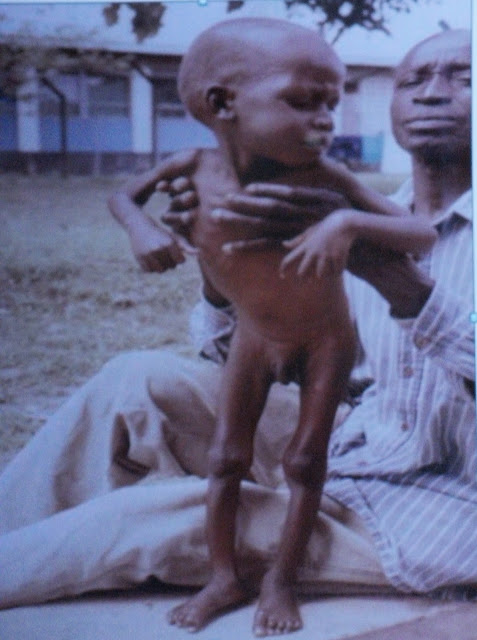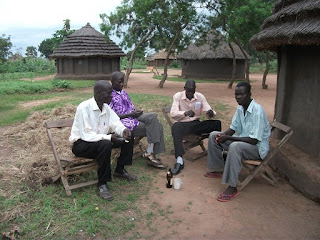Article Title: Mal-nutrition in Moyo district
MALNUTRITION
Moyo Hospital is government hospital in Uganda, in northern part of the country and the research carried out in Moyo Hospital indicates the number of mannerists increases in the last three years.
Malnutrition.
This is a medical condition caused by lack of eating enough or right food in the body for better health and hygiene.
 |
| An old woman in Metu Sub County stayed without testing food for three days by the time the nutritionist visited her. No body to help her. She lives alone. |
Reference points:
According to 2008/2009 Financial Year report from Moyo hospital Nutritionist Mr. Koma Mote, number of children admitted with acute severe Mal-Nutrition is 146 (M 92,F54).Out of this 16 died, 94 cured and discharged, 06 referred for further management, 04 defaulted (their mothers) and 26 were non respondent (take long to recover and needs constant follow up).
Summary report on Mini Nutrition survey carried 1st July 2009
The main target population was children aged 6-59 months living in Moyo District. Out of eight sub counties namely, Moyo, Dufile, Metu, Lefori, Itula, Gimara, Aliba and Moyo Town Council, only Aliba and Metu have been sampled.
The main objectives were the following:
- Estimate the prevalence of acute malnutrition
- Understand the causes of malnutrition.
Findings
Prevalence of global acute malnutrition (GAM) was 19.1% while severe Acute Malnutrition (SAM) was 5.2% in the sample population. Theses figure are both higher than the required standards of World Health Organization (WHO/GAM 15% and SAM 1%). Therefore, according to the survey, the prevalence of malnutrition for under the age of fives in Moyo District is alarming. According to the hospital nutritionist Mr. Koma Mote, stunting was 40% which is above the national average of 38%. Under weight is 32% above the national average of 16%-18%. Severely acute malnutrition was found at 18% while the national average is 6%.
The above information shows that Moyo District has alarming situation which needs an urgent humanitarian action.
Acute severe malnutrition from Metu sub county field photo: 14/September/2011
Acute severe malnutrition from Dufile sub county field photo: 12/August/2011
| Target Audience. |
The target group is the households, local council one and women council
members in the village, head teachers, leaders in religious institutions and all the blog user
The members of finance and planning committee of Moyo Catholic parish have been trained on the topic: Harmonizing spiritual development with economic development: The church and resource mobilization, committed, self motivated and self driven staff very good at voluntary service.The community members very much appreciate the creative ideas (innovation) of AAP.
CURRENT CHALLENGES
The organization lacks funds to acquire the following basic resources:
- Means of transport (motor vehicle, motor bikes) for out reach programmes and taking members produces to market places.
- Computers for keeping information are not there
- Farm implements such as ox-plough and tractor for commercial farming are lacking.
- AAP does not have a projector to easy sensitization
- AAP does not have a generator/solar as source of power.
- Lack adequate liquid cash to promote capacity building in Agro-Nutrition-Income
Current activities.
AAP is in partnership with Community for Rural Empowerment Development (CEFORD) moving in primary schools to advocate about the rights and responsibilities of teachers, pupils, School management committee, Parents and Teachers Association.
Conclusion.
Poor feeding is the main cause of mal-nutrition of all types and affects both under five, children and adults. It also contributes a lot to poor performs of pupils and students in schools.
Given positive attention to support the populaces, most of these set backs will be addressed and majority of the people will be raised out of the acquit poverty line.
We shall be very grateful to organizations, groups of people and individuals who will be willing to support us in form of ideas and material resources in the struggle to fight and reduce the strength of the biting poverty said by Drati George.
Prepared by:
Field Officer
Jurugo Simon,Metu Maarifa Centre.













